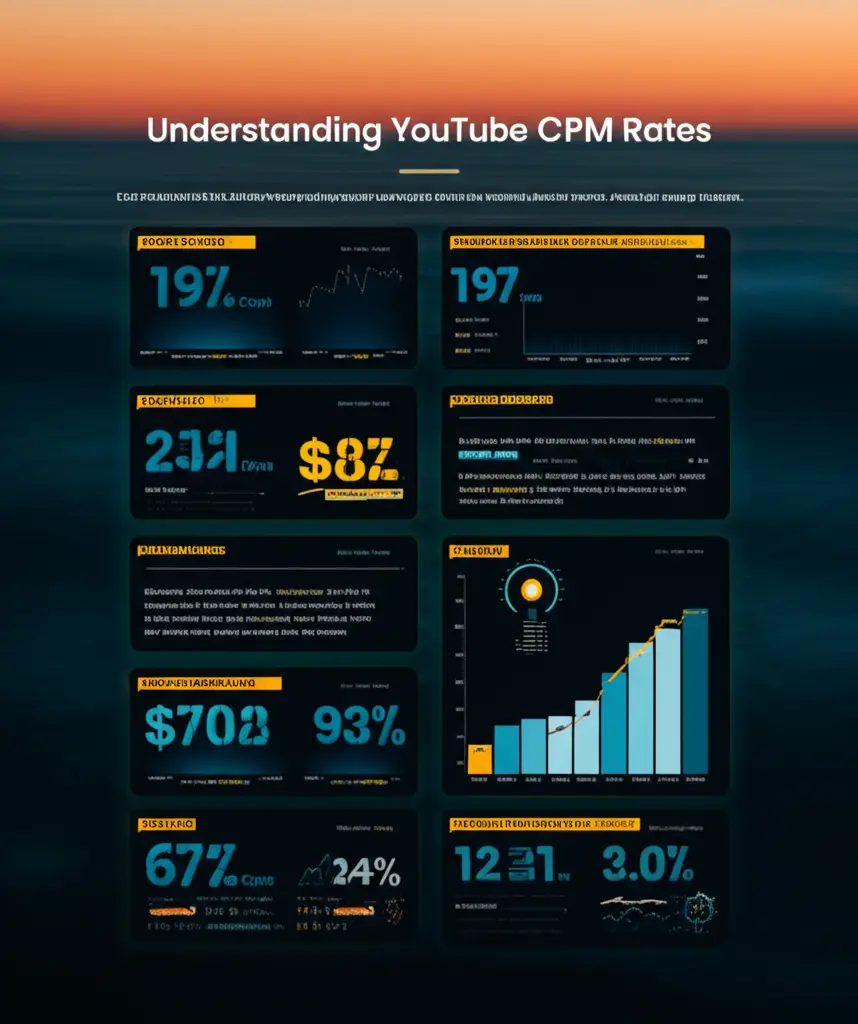YouTube CPM vs RPM in 2025 – What’s the Difference and Why It Matters

If you’ve been researching how much YouTubers earn, you’ve probably come across terms like CPM and RPM.
At first, they sound confusing.
“Is RPM the same as CPM?”
“Why is my RPM lower than CPM?”
“Which one actually shows what I earn?”
These are common questions — and the answers are very important for any creator who wants to understand YouTube monetization in 2025.
In this guide, you’ll learn:
- The difference between CPM and RPM
- How YouTube calculates both
- Which one matters more for your income
- How to increase them in real ways (no gimmicks)
Let’s clear it up once and for all.
💡 What is CPM on YouTube?
CPM stands for Cost Per Mille, which means how much advertisers pay per 1,000 ad impressions (not views!).
Let’s break it down:
-
Who sees CPM?
YouTube sees CPM from the advertiser side. It’s what brands are paying. -
What does it measure?
It reflects the gross amount paid per 1,000 monetized ad impressions. -
Example:
If a company pays $10 to show ads on your videos 1,000 times, your CPM is $10.
But here’s the catch:
You don’t receive 100% of the CPM. YouTube keeps a cut.
💰 So What is RPM?
RPM stands for Revenue Per Mille, or how much you (the creator) actually earn per 1,000 views — not impressions.
Think of it like this:
RPM = Your Actual Take-Home Earnings
It includes revenue from:
- Ads (after YouTube takes its 45%)
- Channel memberships
- Super Chats (for live streams)
- YouTube Premium views
- Other monetized features
Formula:
RPM = (Total Revenue / Total Views) × 1,000
So if you earn $5 from 2,000 views:
RPM = (5 / 2000) × 1000 = $2.50
That’s how much you’re earning per 1,000 total views across your channel — not just monetized views.
🧠 CPM vs RPM – What’s the Real Difference?
| Metric | CPM | RPM |
|---|---|---|
| Stands For | Cost per 1,000 ad impressions | Revenue per 1,000 views |
| Who It’s For | Advertisers | Creators |
| Based On | Monetized ad impressions | All views (monetized or not) |
| Includes | Only ad payments | Ads, memberships, Super Chat, Premium |
| Reflects | Gross earnings (before YouTube cut) | Net earnings (after YouTube cut) |
In short:
CPM is what advertisers pay. RPM is what you earn.
📉 Why Is My RPM Lower Than CPM?
This is totally normal.
Here’s why your RPM is always lower than your CPM:
-
YouTube takes a 45% cut of ad revenue
If your CPM is $10, you get $5.50. -
Not every view shows an ad
Some viewers use ad blockers. Some aren’t shown ads at all. -
RPM is based on all views — not just monetized ones
So even if 1,000 people watch your video, only 700 may see ads.
This is why creators with high CPMs (like in finance or tech) still have real-world RPMs around $2–$7.
📊 What’s a Good RPM in 2025?
RPM varies wildly by niche, geography, and video type. Here’s a general idea:
| Niche | Average CPM | Average RPM |
|---|---|---|
| Finance & Investing | $15 – $40 | $5 – $15 |
| Tech & AI Tools | $10 – $30 | $4 – $12 |
| Education / Study Tips | $6 – $20 | $2 – $8 |
| Fitness & Wellness | $5 – $15 | $2 – $6 |
| Entertainment / Vlogs | $2 – $7 | $0.5 – $3 |
These are estimates — your real RPM depends on how long viewers watch, where they’re located, and how advertisers value your content.
📈 How to Increase Your RPM (and Real Income)
You can’t fully control CPM or RPM — but you can influence them.
Here are real strategies that work in 2025:
1. Focus on High-CPM Niches
Topics like personal finance, freelancing, tech, and software reviews naturally attract higher-paying advertisers.
→ Check out our blog on Top YouTube Niches in 2025
2. Make Longer Videos
Longer videos = more ad slots = more revenue.
Aim for 8–12 minutes minimum, so you can enable mid-roll ads (which show in the middle of your video).
3. Boost Watch Time
The more people watch, the more chances they see ads.
- Hook viewers in the first 15 seconds
- Use jump cuts or chapters
- Keep content value-packed
4. Post Consistently
More uploads = more views = higher RPM (especially as your back catalog grows)
You don’t need to post daily. Even 1–2 videos a week can compound over time.
5. Use Affiliate Links & Channel Memberships
These don’t count in RPM directly, but they boost your total income per 1,000 views.
✅ Conclusion
Let’s recap:
- CPM shows what advertisers pay per 1,000 ad impressions
- RPM shows what you earn per 1,000 views, after YouTube’s cut
- RPM is the better metric to track your actual earnings
If you want to build a profitable YouTube channel in 2025, understanding these numbers helps you set better goals and improve your strategy.
👉 Focus on value-packed content in profitable niches.
👉 Don’t chase CPM — chase audience trust. RPM will follow.
Related Articles
Nasurudeen
Passionate writer sharing insights on YouTube growth, income, and creator economy.